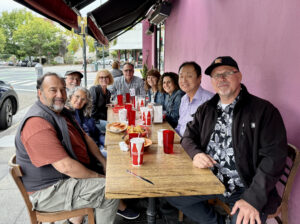By Sam Herzberg, AICP, August 12, 2025
This three part series include contributions from Juan Borrelli, AICP, Alex Hinds, and Hing Wong, FAICP. Links to Part 1—The Village of Loreto Bay and Part 2—Loreto.
The City of La Paz and Southern Baja California Sur
La Paz is the capital of Baja California Sur, a Mexican state on the Baja California Peninsula with a population of just 300,000 in 2025. It’s known for its seafront Malecón promenade with beaches, parks and public art by Mexican and international artist
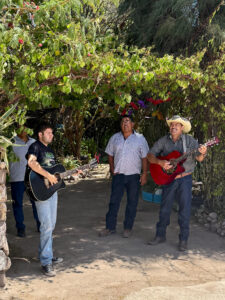
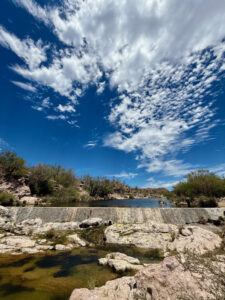
We took a shuttle bus for a 4-hour drive to La Paz, but along the way stopped for a tour at the Rancho Viejo of Santa Cruz to learn about the Ranchers’ way of life, who live in the upper watershed. Many Ranchers, and other agricultural producers, are protecting rural lands from the threats of mining and urban development. There are significant efforts to tie the urban and ranching and agricultural economies together to support the local ranching and agricultural communities. The community of several Ranchers were all very gracious and sang for us songs about their lives, and led us on a tour of the property with them to see this ranch’s water supply, turkeys, and cattle. The eight years of drought has been very difficult on their cattle population, which has decreased over time. They made a lunch for us of tamales, goat cheese, beans and Jamaica juice and date/goat cheese candies. They showed us their exhibit of ancestors who had lived on these lands for several generations. They explained more Ranchers are starting to work off the ranch in local cities over time the cattle production is not what once had been due to drought conditions.
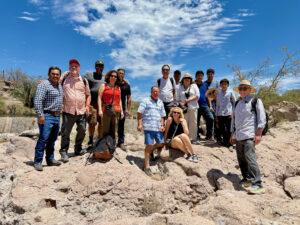
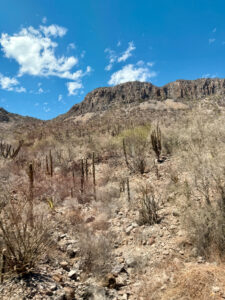
After leaving the Ranch, we continued our trip to La Paz zigzagging across the mountainous region of cactus and succulents. Navigating Baja California Sur by car means winding your way across mountain ranges from the west coast to the east—the only practical route through its rugged terrain. We passed by a wind farm and an asparagus farm, which looks like tumbleweeds, on the way. We arrived at our hotel in La Paz across from the Cathedral Church which dates back to 1861.
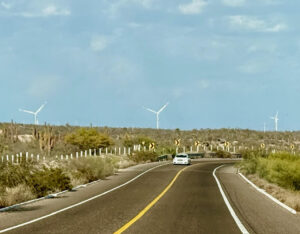
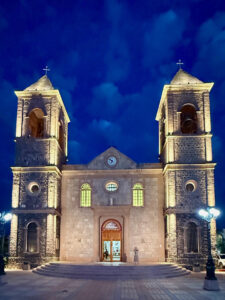
The next morning, we got a shuttle tour of the sites of La Paz including the Cathedral church, art museum, the Malecón (boardwalk), and enjoyed local ice cream.
After lunch, we met with Carlos Cabada and J. Denis Osuna of the Federal Ministry of Agriculture. These researchers insisted they were not decision makers but gave us an overview of agriculture and trends in Baja California Sur. Approximately 98,842 acres are in agriculture including the crops of asparagus, corn, wheat, alfalfa, potatoes, oranges, peppers, papaya, mango, tomatoes, dates, and herds of cattle and goats. They indicated if they were to recommend one tree to be planted to address climate change it would be the Mesquite tree which grows well in Baja California Sur, and provides shade. Baja California Sur has very low fertility in its soil. Crop rotation is important to increase organic matter, and the Ministry monitors crop rotations. There are increasing efforts to compost and make compost teas for fertilization instead of using chemicals. In Mexico, the States of Sinaloa and Sonora provide the majority of food supply for the country’s residents. The government is trying to support agriculture at a minimum of 7.5 acres with an agreed-on price of the crop. Some other Ministry offices are focused on GMO testing for chickpeas, corn, and fisheries. Organic agriculture is also increasing based on community demand. The Ministry of Agriculture is working with some landowners to provide energy (not necessarily green energy) for water distribution, but it does not address the water availability supply issue.
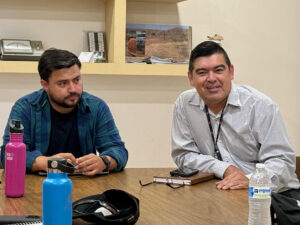
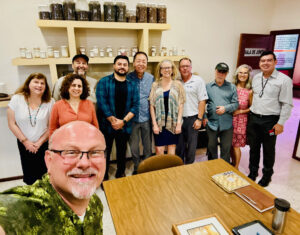
The total population of Baja California Sur is 800,000 people, but most of the state only gets eight inches of rain annually within a 6-week period. They are in their eighth year of drought. 65% of their 39 aquifers are at a deficit from a variety of wells over drafting aquifers. Like other populations in other countries agriculture uses up 75% of the available water supply, which is managed at the State level with municipalities and irrigation districts for increased water efficiency. 2016 was a significant year because of shifts in irrigation to drip and other higher efficiency irrigation techniques. Greywater recycling is feasible for alfalfa where available. Over time the Baja California Sur population is increasing (due to a number of expatriates and retirees), agriculture is decreasing, and the cost of lands for development is increasing. There is a lot of food waste that is not being addressed as well as it could. Agritourism is becoming popular where feasible.
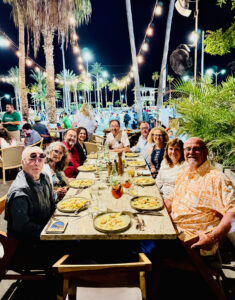
On April 18, 2025, our group explored La Paz on our own. My wife and I took a boat tour to the Island of Espiritu Santo to explore multiple beaches, go snorkeling with sea lions and coral reefs, and we observed at least 100 Mobula rays leaping 8-10’ out of the water. It too was a magical trip to see the beauty of the area from offshore. Others on the tour further explored the city on foot, checked-out the many public art installations, and toured the Baja California Sur Regional Museum of Anthropology and History. As a tour group we had all enjoyed a final goodbye dinner along the Malecón sunset. Our group had bonded throughout the tour, and we all reflected on the experiences over good food and drink.

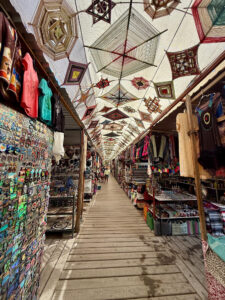
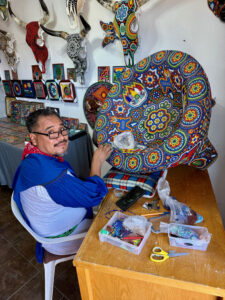
The next morning, a decision was made to leave La Paz early so that as we zigzagged from the east to west and back to east coast across the mountain range, we could stop at the Town of Todos Santos to explore the “Hotel California” along with the local art scene. Initially founded as a mission in 1724 on the Pacific coast of Mexico’s Baja California Sur Peninsula, today Todos Santos is an artists’ enclave known for its many galleries and local artisanal shops and restaurants. After exploring the area, we all ended up with indigenous and local art to bring home.
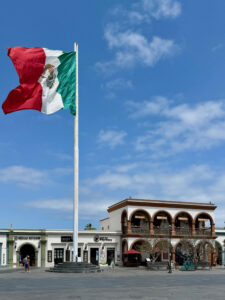

While a few returned home, a group of us stayed a few extra days in San José del Cabo, which has a population of 136,000. The city, along with Cabo San Lucas, forms a metropolitan area of 350,000 inhabitants. San José del Cabo had beautiful colonial architecture, a thriving art and dining scene, and wide sandy beaches. We were there over the Easter holiday when the plaza was filled with families and a fireworks display at the end.
This had been a wonderful learning and exploring trip to discover the other California, which we are connected to in so many ways. We have initiated the personal connections to continue learning from each other about how to house and sustainably plan our growing populations in increasingly arid lands with sensitive environments.
